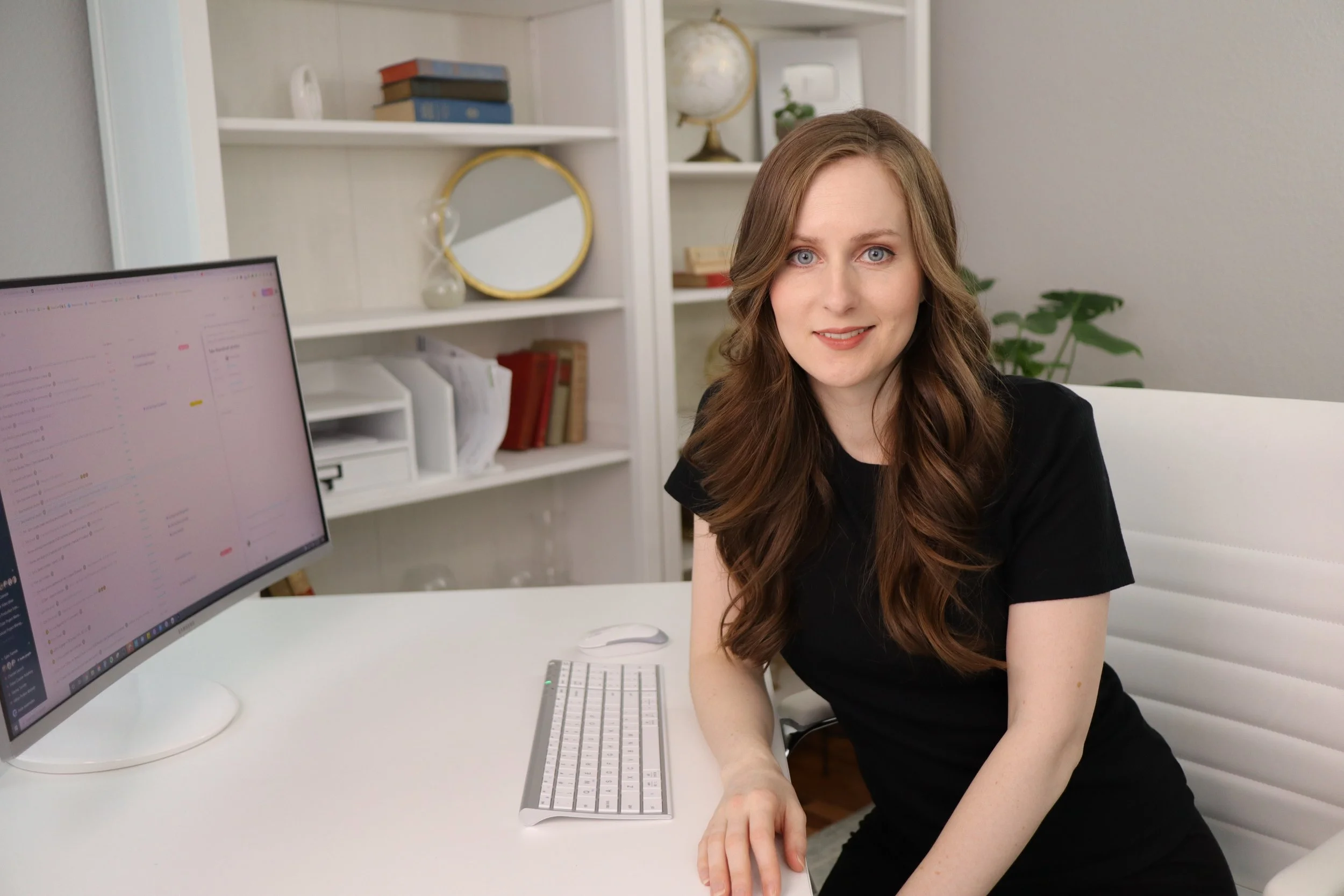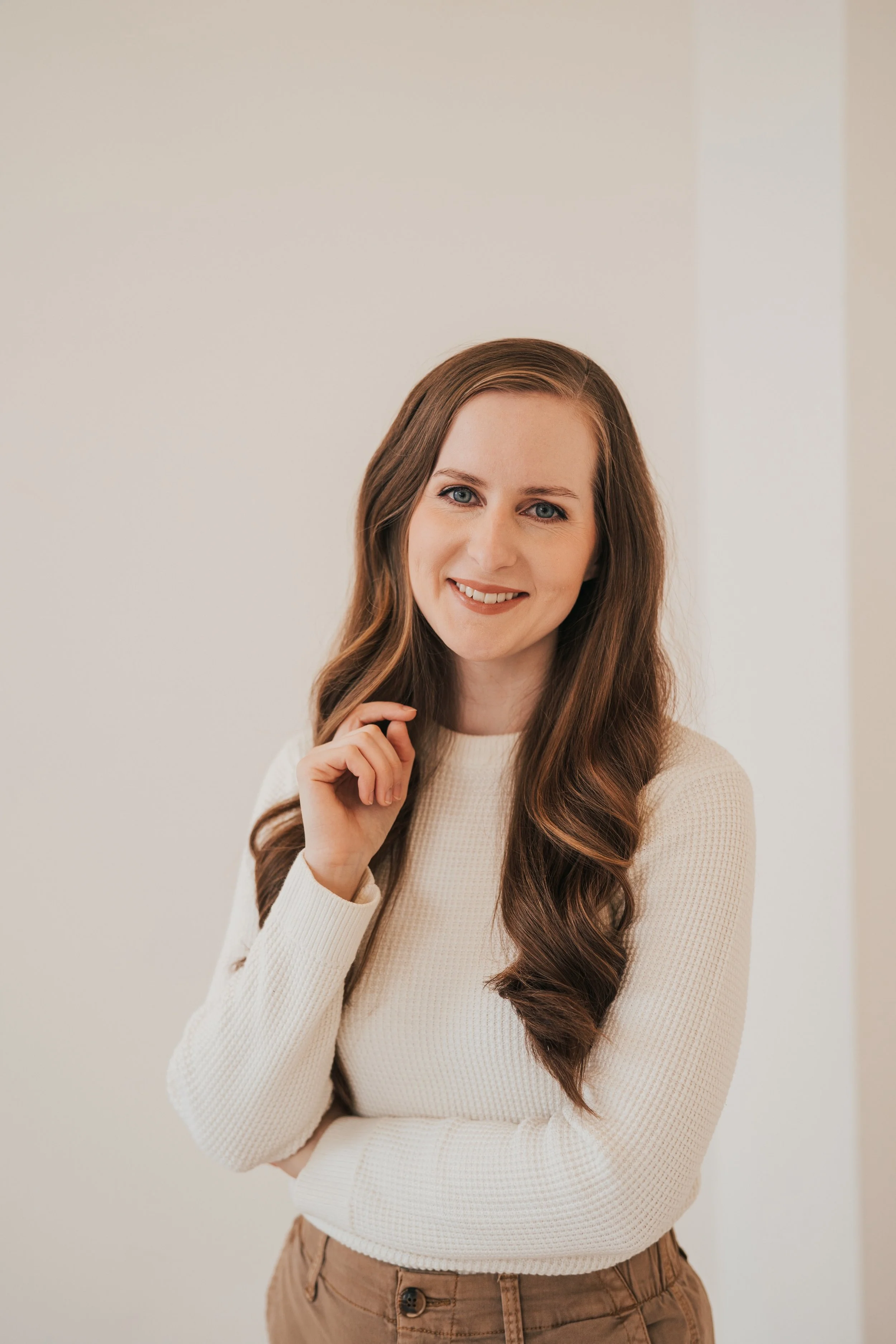how to "listen to your audience" when you DON'T HAVE an audience
If you’re trying to come up with content ideas your audience will love, but you don’t HAVE an audience…
Or maybe you want to build a product your audience wants to buy, but you are starting at zero without anyone to market to…
What do you do?
How do you listen to your target audience and get valuable feedback when they aren’t already a part of your community?
This doesn’t need to be complicated, so today, I want to share 4 simple strategies I’ve learned that work to listen to your audience even if you don’t already have one.
strategy 1 - use your former-self as your target market
Many of us are in business because, at some point in the past, we overcame a big challenge… and that made us realize that we’d like to help others who are struggling with similar issues.
It’s a classic for a reason. Own it! Your past is powerful because it gives you a unique opportunity to help.
It also provides you with an incredible way to decide what content to create for your audience.. Start by using your past self as your target audience and work through your own mini market research interview.
Just a note: if you’re marketing to a group that isn’t like you, this isn’t the strategy for you. In that case, skip down to strategy #2 below.
Ask yourself a few pointed questions as you think back to who you were in the past before solving the problem you now are creating content about:
What were you struggling with the most?
What questions did you have about this specific topic?
What did you want help with regarding this topic?
What obstacles kept coming up for you that you had to overcome?
What motivations did you have for solving this problem?
What were you searching online as you tried to solve the problem?
Doing this exercise will enable you to brainstorm a ton of poignant content ideas.
Take me for example. I struggled knowing how to start an online business and make money with it. I tested a lot of different ways, failed at a bunch of them, and continued the trial and error process until something worked.
That led me to creating my YouTube channel to help others build successful online businesses with fewer roadblocks than I faced. When creating content in the beginning of this journey, I used myself as my target market and made videos to answer the questions I brainstormed from my past experience.
strategy 2 - listen to your tiny audience
Even if you think you don’t have an audience yet, you do.
You have a tiny audience of first-degree connections, which includes friends, family, and other people you know.
And you may think that those people you know aren’t interested in what you’re doing with your online business, your website, YouTube channel, or podcast… but you’ll be surprised.
When you find a product or podcast or book that you’ve found helpful, what do you do? Do you keep it to yourself, or do you share it with your friends and family you think would benefit from it too? Of course you share it!
And why should your online business be any different if you’re passionate about it?
A while back, my friend Annie started a personal shopping business, and guess what she did to announce it? She thought of a few friends who might be interested in this service, and she reached out to each by text (me included) to share more about it.
She said something like, “Hey, I’m thinking about starting a personal shopping business where I’d do ____ to help people ___. What do you think of that idea?”
And guess what happened!
Because everyone loves giving their opinions, each friend she reached out to sent a response back. She wasn’t asking for them to buy, she was just asking what they thought – but many were interested in learning more about how to book her!
Here’s the takeaway…
Think of people you know who might interested in the content or product you’re thinking of creating, and reach out to them in the way you normally would share exciting news. This very well could be in a text or a phone call or over a cup of coffee.
Not only will you get invaluable feedback, but you can follow up with each of those who seem genuinely interested and conduct a bit of market research with them to find out what they’re struggling with the most, what related goal they’re trying to reach, what questions they have surrounding the topic, and what they’d like the most help with.
That alone will give you a long list of content ideas that you know your target audience will vibe with.
strategy 3 - grow your audience
Don’t have an audience quite yet? It’s never too late (or early) to start growing one.
And you can do this relatively quickly with the right strategies.
A few ways I really enjoy gaining visibility are podcast guesting, participating in a virtual summit or bundle collaboration, or doing a lead magnet swap with other newsletters.
Then, as soon as your audience starts to grow, start listening to them!
Here’s the benefit to having a small audience versus a larger one: you can personalize their experience and gain even more valuable insights.
Here are a few things I recommend doing when your audience is small:
Reply to every email - this is a great place to ask pointed market research questions and get additional feedback
Reply to each YouTube or blog article comment - ask an engaging question that will get a conversation going
Move your social media conversations to direct messages - that way you can get to know your audience even better and help them find a resource or product that’s right for them
These three simple actions will help you get more engagement with your small audience and are a great way to deepen those relationships early on.
strategy 4 - listen to other people’s audiences
The final strategy I’ll share today is about leveraging other people’s audiences. This is especially helpful if you’re just in the planning stages of your business or content creation.
Go check out other bloggers, podcasters, or YouTube creators who are in a similar niche talking about similar topics.
Listen to them. Study them.
When I was starting out with YouTube, I checked out other similar channels and looked at what content they were creating. I studied the comments under each video. I checked the number of likes certain videos got.
This helped me to see which types of videos and topics their audience liked best, which, in turn, would most likely be the types of videos and topics my audience would like best.
A few ways to do this for yourself:
Start by identifying other brands that are similar to what you’re working to build
Look at the comments on their content - what questions are being asked?
Engage with those comments - this can even lead others to discover your content
If you’re looking for ways to come up with content ideas, make sure to implement these four strategies as you’re growing your audience: use your former self as your target audience, listen to your tiny audience, grow your audience, and listen to other people’s audiences.
Here’s the bottom line… you don’t have to wait until you have a big audience to start making a living online.
Honestly, you don’t need a huge audience! You just need the right people to engage with what you’re doing.
You can start making money in as little as 2-3 months and make a full-time living in as little as six. If you’re interested in learning more about how to do this, I encourage you to check out my short podcast series The $100K Method.
In the 10 episodes of the series, I break down the process for how I went from earning nothing online to earning about $100K a year in just one year’s time. Then I share how you can do this with your business.
THE 100K METHOD
The $100K Method is a 10-episode podcast that explores how to strategically scale your online course to six-figure success.
Gillian Perkins brings more than a decade of experience as an entrepreneur and educator and helps you design a business that’s not only flexible and fulfilling but highly profitable.








